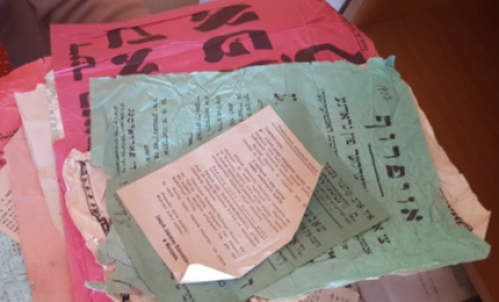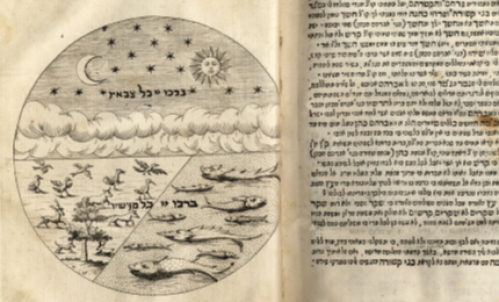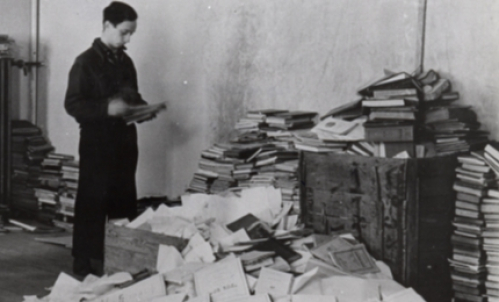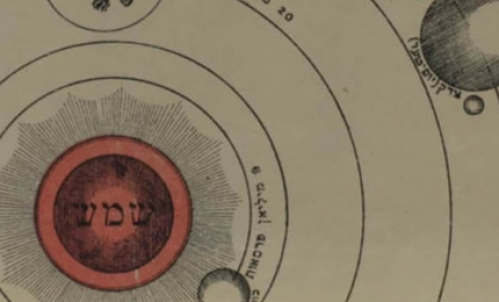A Secret Language for Girls
by ROBERTA NEWMAN
YIVO continues to receive digital images from YIVO collections in the Lithuanian Central State Archives. A new batch arrived in mid-March, bringing a total of 63,000 images to date. Among the earliest materials which were digitized in 2015 are fragments of RG 1.2, Records of the YIVO Ethnographic Committee, a subcommittee of the Philological Section of prewar YIVO in Vilna. The activities of the committee consisted of collecting folklore materials, preparing and analyzing folklore questionnaires, corresponding with folklore collectors throughout the world, and maintaining a museum.
Nothing was too humble for the collectors (or zamlers, as they were called in Yiddish). YIVO’s scope of interest as a whole was wide, ranging from rare works of rabbinica to Yiddish jokes told in the marketplace. No one could have foreseen the magnitude of the Nazi genocide to come, but there was already a sense of the fragility of traditional Jewish life, as well as the fear that it was on the way out. It was modernity and acculturation that were seen as the threats to its survival, though, not mass murder.
And so even mundane corners of everyday life were considered vitally important to record before they disappeared forever: even the rhymes and games of children. They now survive only in the pages of memoirs, or in the memories of the dwindling ranks of Jews who remember their childhoods in Poland before World War II--and in the reports of zamlers in the YIVO Archives.
This report on a secret girls’ language was sent to YIVO by Moyshe Mordkhe Binshtok from Kolki (Kolk), Poland, in 1938.
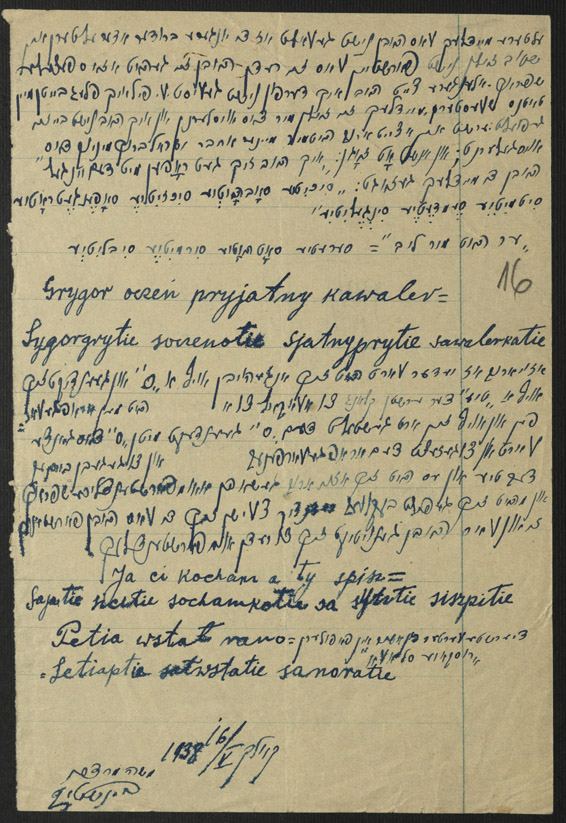
Older girls who didn’t want their younger brothers or parents to understand what they were saying had a special language. For a long time, therefore, I didn’t know what they were saying, no matter how much I begged the daughters of my aunt to teach it to me. But I didn’t succeed. Only some time later, a friend of mine, Yisroel Borekh [Minak?] taught it to me.
The girls’ secret language was a type of pig latin, in which the syllables “si” or “se” were added as prefixes to each word and “ye” as a suffix. The original base language was, of course, Yiddish, but in English, for example, the sentence “He loves me” would come out: “Seheye selovesye semeye.” There was also a Polish version of the language.
In the same letter, Binshtok also reports on a boys’ secret language composed of numbers, based on gematria [the traditional system of correlating the alef-beys to numbers], that he himself used with friends when he was “apprenticing with Motl, the shoykhet [ritual slaughterer].”
Roberta Newman is YIVO’s Director of Digital Initiatives.
